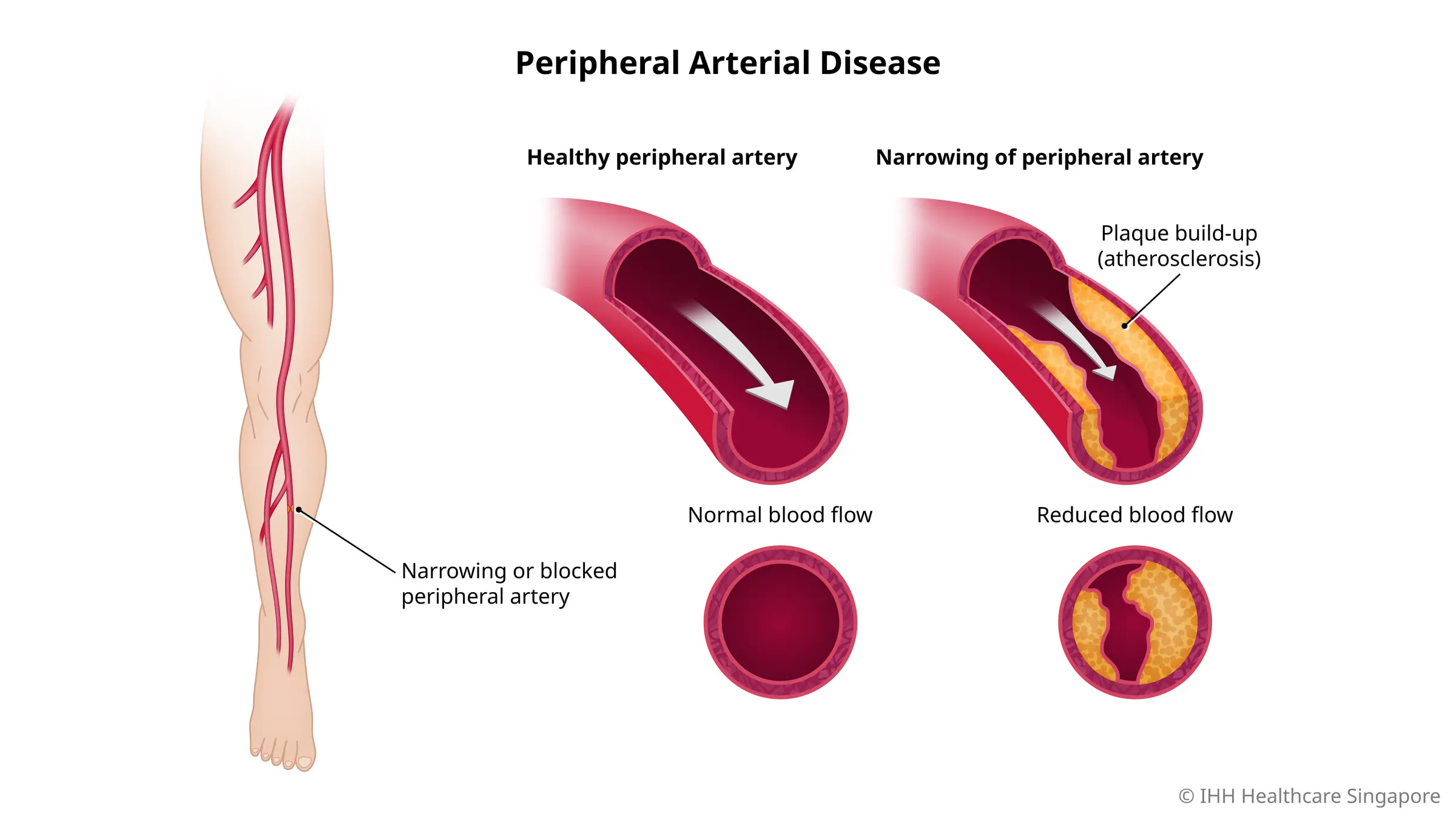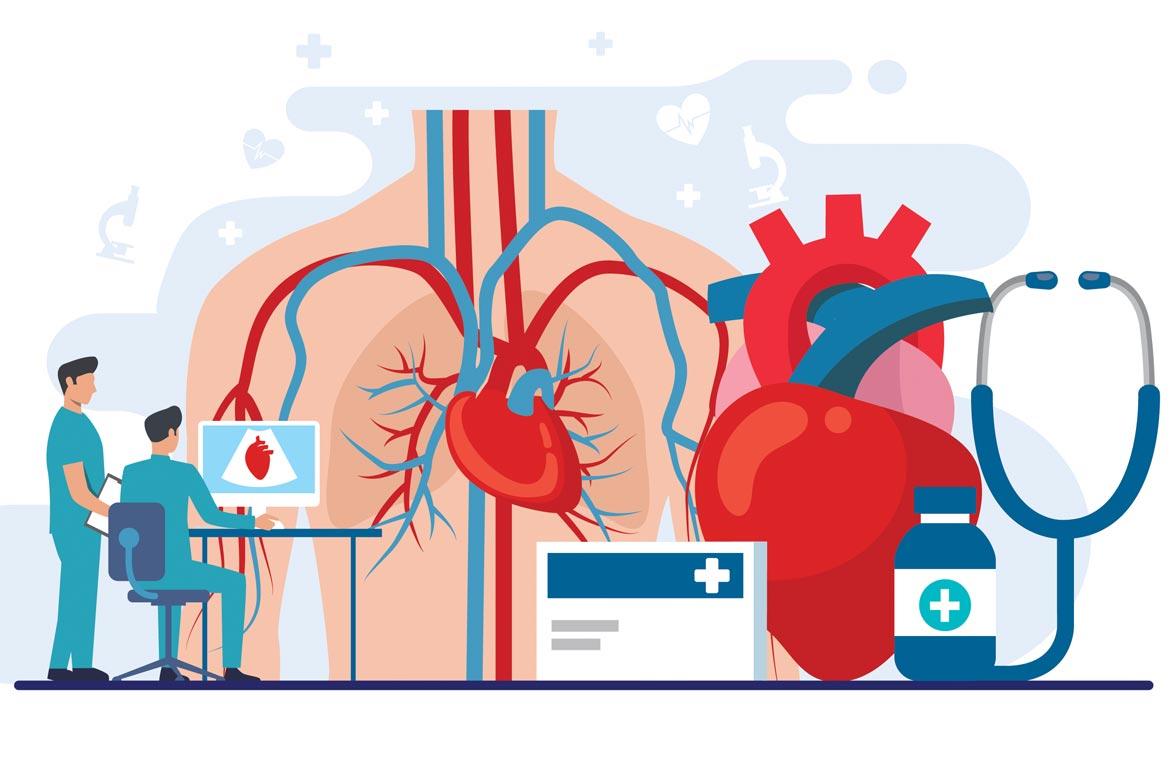-
-
Featured Care Areas

Peripheral Arterial Disease (PAD)
What is peripheral arterial disease (PAD)?
Peripheral arterial disease (PAD), also called peripheral artery disease, is a chronic condition where narrowed arteries reduce blood circulation to the limbs.
PAD is categorised as a type of peripheral vascular disease (PVD) – a term used to describe various circulatory diseases affecting the arteries, veins and lymphatic vessels.
PAD occurs when your limbs such as your legs do not receive enough blood flow. This in turn causes symptoms such as cramping, or leg pain when walking (claudication).
PAD is usually caused by a buildup of fatty deposits in your arteries, known as atherosclerosis.
What are the symptoms of peripheral arterial disease (PAD)?
While some people with PAD have mild or no symptoms, others experience intermittent leg pain that goes away with rest and returns during physical activity.
Common signs and symptoms of PAD include:
- Painful cramping usually felt in your calf muscles, or in your hips, thighs or buttocks when walking, climbing stairs or exercising.
- Leg numbness, weakness, heaviness or fatigue.
- Noticeable coldness of your lower leg or foot, especially when compared with the other side or the rest of your body.
- Sores on your toes, feet or legs that won't heal, or that heal very slowly.
- Redness or other colour changes of the skin.
- Poor nail growth or hair growth on your legs.
- Tissue death (gangrene) of the toes and feet that develop even without injury.
What causes peripheral arterial disease (PAD)?
PAD is usually caused by atherosclerosis, a condition when fatty deposits build up on your artery walls and reduce blood flow.
Less common causes of PAD include:
- Limb injury
- Inflammation of the blood vessels
- Unusual muscle or ligament anatomy
- Exposure to radiation
What are the risk factors for peripheral arterial disease (PAD)?
You have a higher risk of developing PAD if you:
- Smoke
- Have diabetes
- Are above the age of 50
- Have a personal or family history of heart or blood vessel disease, or stroke
- Have hypertension (high blood pressure)
- Have high levels of cholesterol
What are the complications and related diseases of PAD?
If left undiagnosed or untreated, PAD can lead to further complications such as:
- Critical limb ischaemia, gangrene and amputation
- Coronary artery disease, heart attack or stroke
How do you prevent peripheral arterial disease (PAD)?
To reduce your risk of PAD, you should:
- Not smoke
- Exercise regularly
- Consume a healthy, balanced diet
- Go for regular health screenings
- Maintain your blood sugar, blood pressure and cholesterol within healthy levels
This coverage checker is brought to you by Health Insured, an online resource that helps you understand your health coverage in Singapore.
This page has been reviewed by our medical content reviewers.
Need help?
For enquiries, please call
+65 6377 3737
For appointment bookings, please WhatsApp
+65 8111 3777









